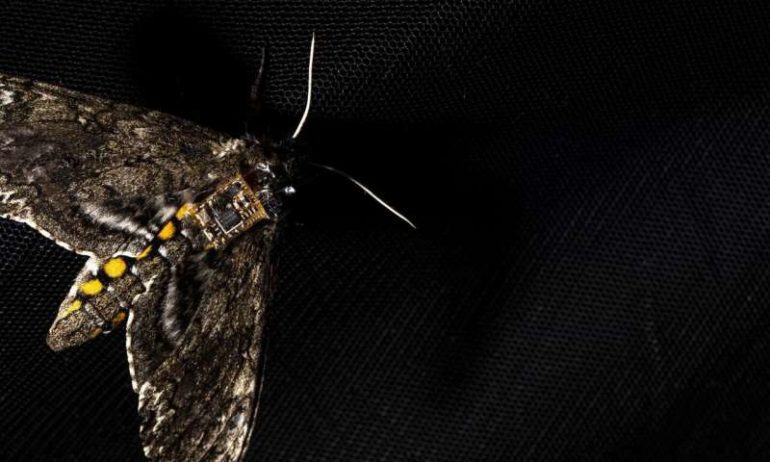There are many places in this world that are hard for researchers to study, mainly because it’s too dangerous for people to get there.
Now University of Washington researchers have created one potential solution: A 98 milligram sensor system—about one tenth the weight of a jellybean, or less than one hundredth of an ounce—that can ride aboard a small drone or an insect, such as a moth, until it gets to its destination. Then, when a researcher sends a Bluetooth command, the sensor is released from its perch and can fall up to 72 feet—from about the sixth floor of a building—and land without breaking. Once on the ground, the sensor can collect data, such as temperature or humidity, for almost three years. The team presented this research Sept. 24 at MobiCom 2020.
“We have seen examples of how the military drops food and essential supplies from helicopters in disaster zones. We were inspired by this and asked the question: Can we use a similar method to map out conditions in regions that are too small or too dangerous for a person to go to?” said senior author Shyam Gollakota, a UW associate professor in the Paul G. Allen School of Computer Science & Engineering. “This is the first time anyone has shown that sensors can be released from tiny drones or insects such as moths, which can traverse through narrow spaces better than any drone and sustain much longer flights.”
While industrial-sized drones use grippers to carry their payloads, the sensor is held on the drone or insect using a magnetic pin surrounded by a thin coil of wire. To release the sensor, a researcher on the ground sends a wireless command that creates a current through the coil to generate a magnetic field. The magnetic field makes the magnetic pin pop out of place and sends the sensor on its way.
The sensor was designed with its battery, the heaviest part, in one corner. As the sensor falls, it begins rotating around the corner with the battery, generating additional drag force and slowing its descent. That, combined with the sensor’s low weight, keeps its maximum fall speed at around 11 miles per hour, allowing the sensor to hit the ground safely.
The researchers envision using this system to create a sensor network within a study area. For example, researchers could use drones or insects to scatter sensors across a forest or farm that they want to monitor.
Once a mechanism is developed to recover sensors after their batteries have died, the team expects their system could be used in a wide variety of locations, including environmentally sensitive areas. The researchers plan to replace the battery with a solar cell and automate sensor deployment in industrial settings.
Terraced graphene for ultrasensitive magnetic field sensor
More information:
Vikram Iyer et al, Airdropping sensor networks from drones and insects, Proceedings of the 26th Annual International Conference on Mobile Computing and Networking (2020). DOI: 10.1145/3372224.3419981
Provided by
University of Washington
Citation:
Researchers use flying insects to drop sensors from air, land them safely on the ground (2020, October 8)
retrieved 9 October 2020
from https://techxplore.com/news/2020-10-insects-sensors-air-safely-ground.html
This document is subject to copyright. Apart from any fair dealing for the purpose of private study or research, no
part may be reproduced without the written permission. The content is provided for information purposes only.



